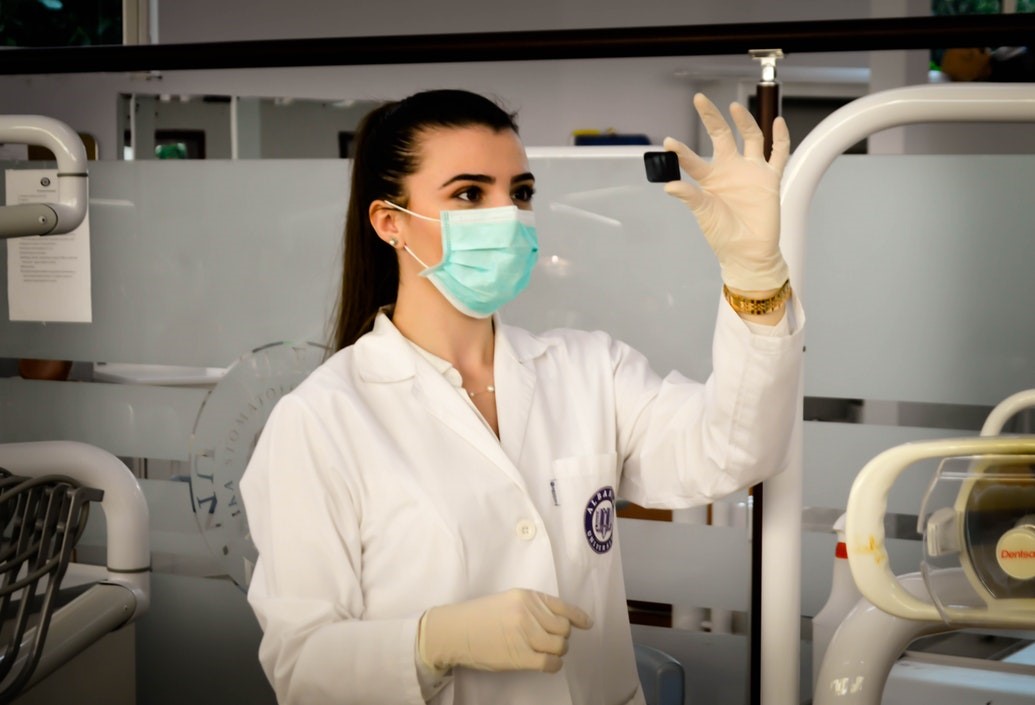New research from the University of South Australia (UniSA) shows that creativity plays a key role in engaging students in STEM subjects, not only motivating them to continue their studies in this critical area, but positively influencing STEM career choices beyond school.
“So [in the study] we could see that the more students feel they can be creative in a specific subject, the higher the chances are for them to continue to study that specific subject in the future,” research co-author Maria Vieira tells EducationHQ.
“And that’s very interesting, especially when we think about STEM, because people tend to associate creativity more with the arts and don’t normally see creativity in STEM. Creativity is problem solving. It’s innovation – and with that, is a fundamental capability in STEM, so it’s very interesting to see this association happening.”
Vieira, a lecturer in education and a PhD candidate in STEM at UniSA, says as the world becomes more reliant on AI and automation, the importance of STEM grows with it, yet there remains a distinct gap between the education system and the skills being demanded by employers.
“Educating future generations in STEM is vital to help solve the problems of the future, but we need more students, and more diverse students, to study STEM throughout their school and university careers to meet future work demands,” she says.
“We also need to nurture ‘21st century skills’, uniquely human skills like creativity, that cannot be replaced by AI.”
While Australian students are ranked amongst the highest for creative thinking in the world, according to the latest PISA results, earlier this year, Dr Claire Scoular, a program director at ACER, told EducationHQ that many countries, including Australia, have struggled to teach creativity.
She said despite the current lack of space in the curriculum, room needs to be made for it, even if it is just to emphasise it a little more.
Melding creativity into STEM subjects
Vieira’s research suggests that integrating creativity across STEM subjects at school, is a great way to encourage more engagement, fuel retention and open up career pathways.
“I think the first thing is actually redefining our understanding of creativity, that creativity is problem solving, and so with that, understanding that it’s really important for students to work on problems that don’t necessarily have one single right answer,” the academic suggests.
“… so working with real world problems that make students curious about the world around them is really important.

Brazilian researcher Maria Vieira says by incorporating creativity into STEM subjects, we’re ensuring students can feel creative, which motivates and encourages them to continue with STEM and hopefully take up STEM career pathways.
Vieira says she is not a fan of the umbrella term ‘STEAM’, which incorporates the arts into STEM.
“I think this reinforces that creativity just belongs to the arts,” she contends.
“And because of that, we have to embed that in the STEM acronym. I don’t agree with that, but it’s an approach that is quite common in education.”
That said, inquiry-based learning, Vieira says, is very effective in stimulating this curiosity and creativity.
“So approaches like Design Thinking and Futures Thinking offer a very structured framework that allows teachers to guide students in that process, but at the same time, offer some level of flexibility to adapt that into the classroom,” she says.
“I think the main point here is actually helping teachers to also redefine their roles in the classroom, and not be afraid of changing their roles from just being lecturers and start to become facilitators of their students’ learning process. So giving them more agency and autonomy in their learning process.”
While Vieira acknowledges those approaches to teaching can sometimes be a little overwhelming for educators to implement, she has several very simple pointers to keep in mind.
“The first thing when we talk about creativity is openness – so really becoming open to new things and stimulating that mindset in students, of trying new things, and really showing them that nothing really bad can happen if they take some risks and fail during that process as well.
“So allowing them to fail and learn from that process is really important.
“I think also rewarding some risk taking and asking open-ended questions to students is a very simple thing they can do as well. So instead of asking, ‘Do you have any questions?’, a better way to frame that would be ‘What questions do you have?’ So you kind of allow students to actually have questions and feel safe asking them.”
Getting more women into STEM fields
Australia continues to face a STEM crisis, with school students’ results in maths and science stagnating or declining compared to our international counterparts, and less than 10 per cent of students studying higher level maths.
Nationally, women make up only 37 per cent of enrolments in university STEM courses, and only 15 per cent of STEM-qualified jobs are held by women.
In her current role, Vieira coordinates gender equity programs in STEM fields, and works with more than 500 school students across South Australia and Victoria.
She says while integrating creativity across STEM subjects benefits both female and male students, it can serve as an effective tool to address the persistent gender gap in these fields.
“The gender gap is a very complex problem, and as a complex problem, it doesn’t have a single answer, but it can give us some indications that creativity might be one possible, effective approach to deal with this gender gap.
“First, because we know that creativity has the power to reduce anxiety, we know that females tend to be more anxious and to experience less positive feelings related to STEM.

Nationally, women make up only 37 per cent of enrolments in university STEM courses, and only 15 per cent of STEM-qualified jobs are held by women. Vieira says integrating creativity across STEM subjects can serve as an effective tool to address the persistent gender gap in these fields.
“And at the same time, when we look at creativity, in the curriculum, we’re just talking about creative thinking, as a core capability, and we are ignoring how people feel about their creativity, and the environments that allow that creativity to flourish.
“And so this study that we did is so interesting, especially because we are not asking or measuring creativity itself, we are measuring their feelings of creativity, or how creative they feel in those disciplines.
“And the study shows that boys tend to score higher than girls, which is not surprising, so the whole point of my research is actually stimulating in building this creative confidence in young girls.”
Vieira is keen to emphasise that it’s not just about teaching creativity, we know that creativity can be taught, but her point is actually trying to understand what are the best teaching approaches to develop this creative confidence in the classroom.
She says a key solution could be to explore the altruistic values of STEM.
“One of the reasons why we have so many women in the health industry, for example, is the fact that it’s very clear for them how they can help people,” she explains.
“We know that for girls and women, it’s important for them to see some altruistic value in their career choice and this is not often explored in STEM, unfortunately.
And so exploring that specifically in fields where this is less obvious, like engineering and technology. So making the point on how those fields are helping people is really important, and obviously connecting that to real world problems really helps in that process.
Vieira says finding ways to explore creativity in the classroom through inquiry-based learning, definitely has potential and social interaction is another important point, (which is a focus driving the excellent work being done by Girl Geek Academy).
“So helping girls to build those social connections and reframing their understanding that scientists are not people that work in isolation in a lab and don’t talk to other people, that’s not true. We know it’s not true.
“And those social connections should be stimulated to create this safe space for them. So trying to think of activities and learning approaches that connect girls to other girls from different schools, different year levels, and allowing those social interactions to happen.”
Direct instruction important but not be-all, end-all
Professor Simon Leonard, a co-author of the research says with NSW ushering in a new school curriculum that focuses on direct instruction, there is a risk that student motivation will drop.
“As AI takes over the mundane, we need education to become good at working with complex capabilities like creativity,” Leonard says.
“Of course, direct instruction is necessary to build important skills, like numeracy and literacy, but it is not sufficient to prepare children to thrive in the world of tomorrow, and to make it a world worth thriving in.
“Humans like to be and to feel creative. It motivates us to succeed. We need policy makers, school leaders and researchers to really open up to the idea that creativity is at the heart of motivating students, and it can make the difference in graduates choosing to study in a STEM field.”
Vieira agrees.
“We know that direct instruction is very effective to develop a basic knowledge and we know that creativity is domain specific, so having a basic knowledge about the topic you’re trying to be creative in or trying to find a solution on, is really important. So this basic knowledge needs to exist.
“But at the same time, if we are keen to develop deep thinkers, and think about students as deep thinkers, we need to have this guided inquiry happening so they can actually develop those transferable skills and capabilities to apply across subjects. And creativity is one of them.”














